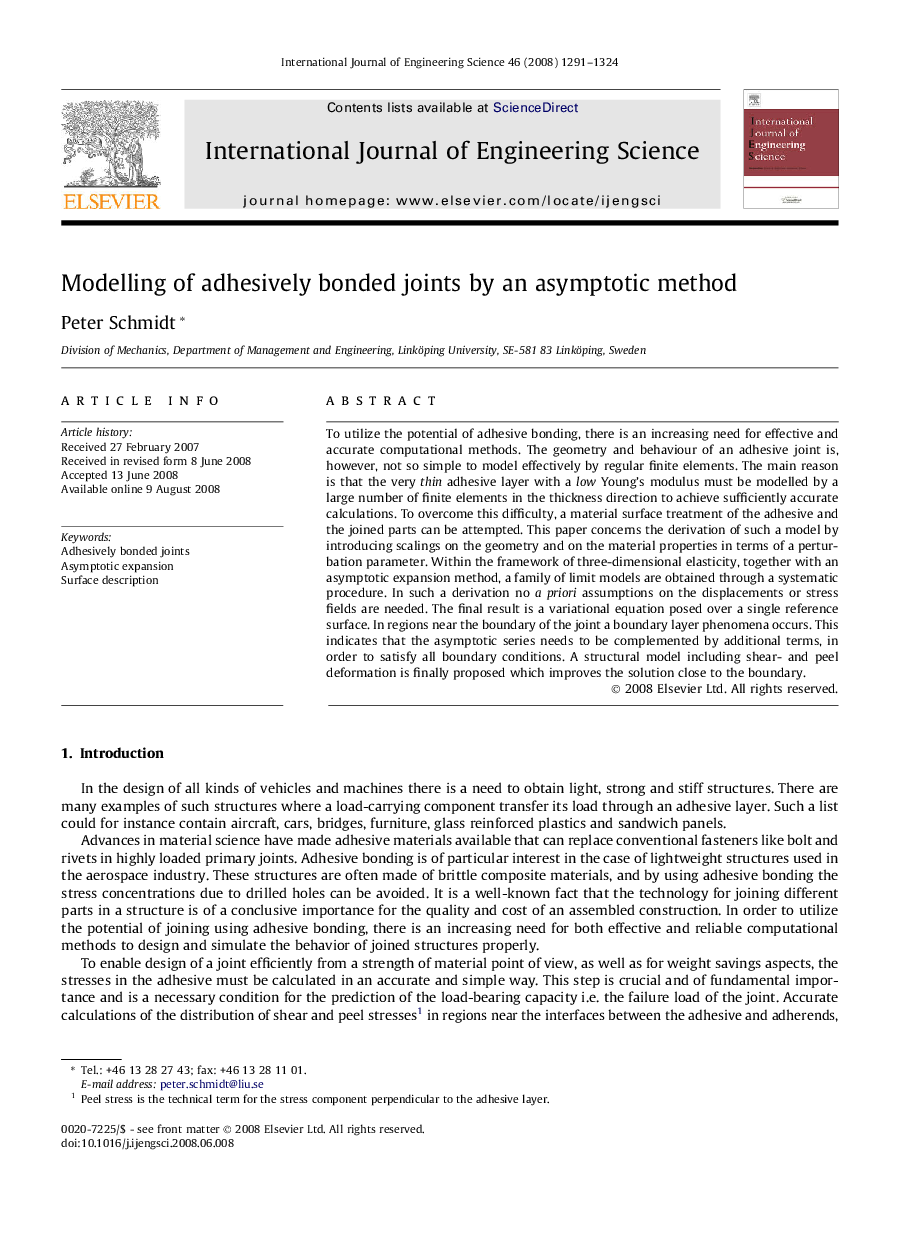| Article ID | Journal | Published Year | Pages | File Type |
|---|---|---|---|---|
| 825608 | International Journal of Engineering Science | 2008 | 34 Pages |
To utilize the potential of adhesive bonding, there is an increasing need for effective and accurate computational methods. The geometry and behaviour of an adhesive joint is, however, not so simple to model effectively by regular finite elements. The main reason is that the very thin adhesive layer with a low Young’s modulus must be modelled by a large number of finite elements in the thickness direction to achieve sufficiently accurate calculations. To overcome this difficulty, a material surface treatment of the adhesive and the joined parts can be attempted. This paper concerns the derivation of such a model by introducing scalings on the geometry and on the material properties in terms of a perturbation parameter. Within the framework of three-dimensional elasticity, together with an asymptotic expansion method, a family of limit models are obtained through a systematic procedure. In such a derivation no a priori assumptions on the displacements or stress fields are needed. The final result is a variational equation posed over a single reference surface. In regions near the boundary of the joint a boundary layer phenomena occurs. This indicates that the asymptotic series needs to be complemented by additional terms, in order to satisfy all boundary conditions. A structural model including shear- and peel deformation is finally proposed which improves the solution close to the boundary.
